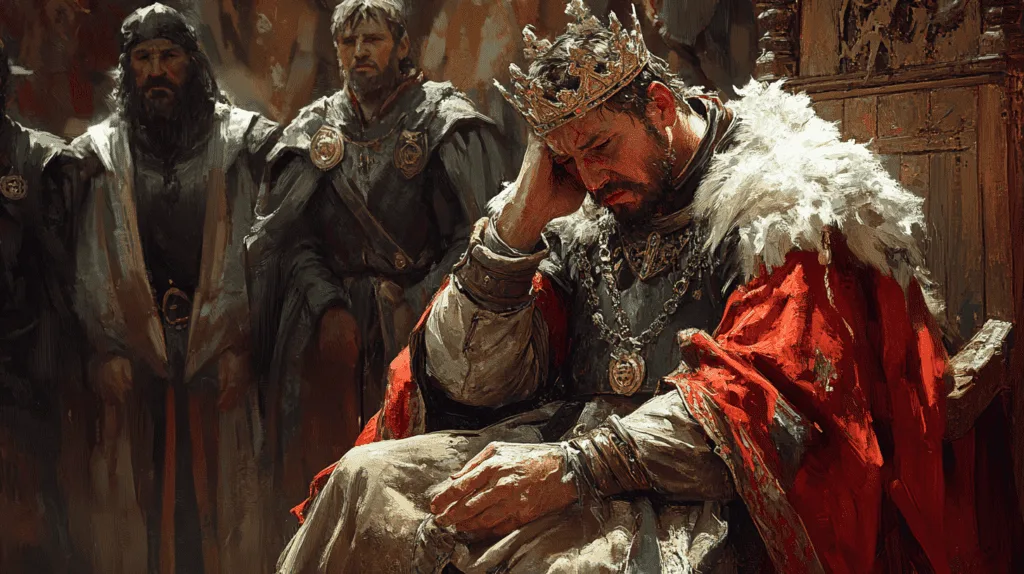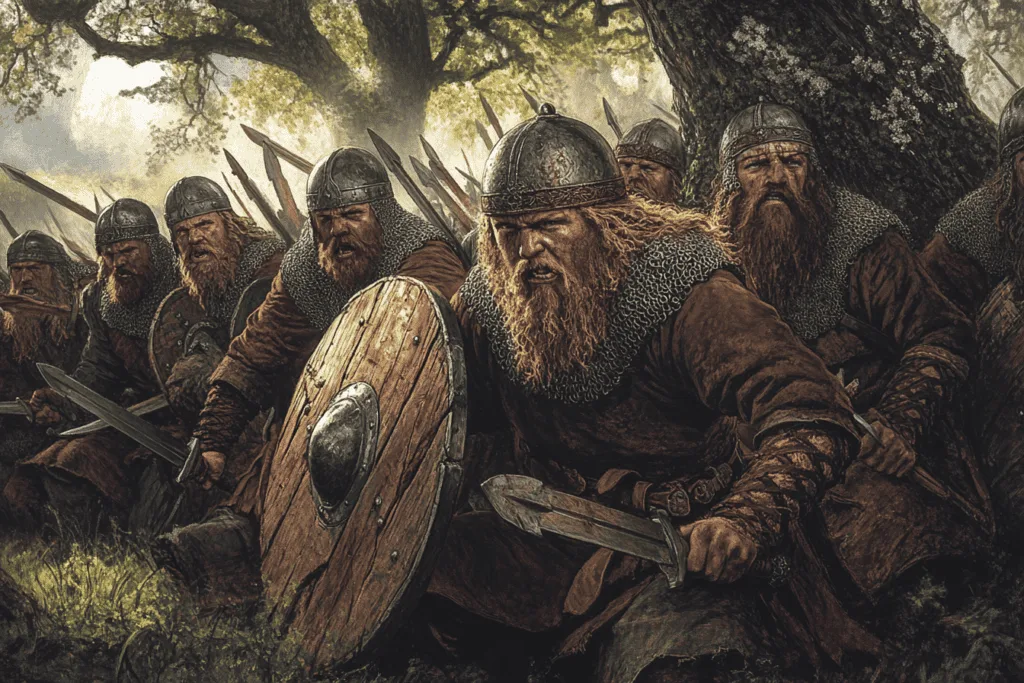
The Real Last Kingdom: The True Story Behind Uhtred of Bebbanburg Fans of Bernard Cornwell’s “The Saxon Stories” and the hit TV series “The Last Kingdom” have been captivated by the adventures of Uhtred of Bebbanburg, the Saxon-born warrior raised by Vikings who plays a pivotal role in the formation of England. While the character has become a beloved figure in historical fiction, many viewers may wonder about the real history behind this compelling protagonist. Let’s delve into the fascinating true story that inspired Uhtred’s character and explore the historical context of the real Last Kingdom.
The Real Uhtred: Uhtred the Bold
The character of Uhtred in “The Last Kingdom” is largely fictional, but he was inspired by a real historical figure named Uhtred the Bold. However, the real Uhtred lived about a century later than the fictional character portrayed in the series. Uhtred the Bold was an ealdorman (earl) of Northumbria who lived from the late 10th to the early 11th century. He ruled during the reigns of King Æthelred the Unready and King Cnut the Great, a tumultuous period in English history marked by Viking invasions and political intrigue.
Origins and Rise to Power
Like his fictional counterpart, the real Uhtred hailed from Bebbanburg (modern-day Bamburgh) in Northumbria. He was the son of Waltheof I, the ealdorman of Bamburgh, whose family had ruled the region for generations. Bamburgh Castle, which features prominently in “The Last Kingdom,” was indeed a significant stronghold during this period, with a history stretching back to the 6th century.
Uhtred’s rise to power came through a combination of military prowess and political maneuvering. In 1006, when Malcolm II of Scotland invaded Northumbria and laid siege to Durham, Uhtred distinguished himself by raising an army and successfully repelling the Scottish forces. This victory caught the attention of King Æthelred II, who rewarded Uhtred by granting him the earldom of Bamburgh, even though his father was still alive.
Uhtred’s Political Career
Uhtred’s political career was marked by shifting alliances and treacherous times. After his initial success against the Scots, he was also appointed ealdorman of York, effectively uniting northern and southern Northumbria under his rule. This consolidation of power made him one of the most influential nobles in northern England.
Changing Loyalties

The real Uhtred lived during a period of frequent Viking invasions and changing political landscapes. When King Sweyn Forkbeard of Denmark invaded England in 1013, Uhtred, along with many other northern lords, submitted to him. However, after Sweyn’s death in 1014, Uhtred switched his allegiance back to the returning King Æthelred. This ability to navigate the complex political waters of the time showcases the real Uhtred’s cunning and pragmatism, traits that are reflected in his fictional counterpart. However, unlike the TV series’ Uhtred, who frequently switches between Saxon and Danish allegiances, the historical Uhtred was firmly rooted in Anglo-Saxon nobility.
Military Exploits
While the fictional Uhtred’s military exploits are greatly exaggerated for dramatic effect, the real Uhtred was indeed a formidable warrior. His most notable military achievement was his defense of Durham against the Scottish invasion in 1006. After his victory, Uhtred reportedly had the severed heads of slain Scots mounted on stakes along the walls of Durham. This gruesome display, while shocking to modern sensibilities, was not uncommon for the time and served as a deterrent to future invaders.
Personal Life
Like his fictional counterpart, the real Uhtred had a complex personal life. He was married three times, each union serving political purposes as well as personal ones.
- His first wife was Ecgfrida, daughter of Bishop Aldhun of Durham. This marriage brought Uhtred several estates and lands belonging to the church.
- His second marriage was to Siga, daughter of Styr Ulfsson of York. This union came with the condition that Uhtred would kill Styr’s enemy, Thurbrand the Hold – a task Uhtred never completed.
- His third and final wife was Ælfgifu, daughter of King Æthelred II. This marriage solidified Uhtred’s position as one of the most powerful nobles in England.
These marriages demonstrate how alliances and political maneuvering were often conducted through matrimonial bonds in Anglo-Saxon England.

The End of Uhtred the Bold
The demise of the real Uhtred is as dramatic as any fictional account. In 1016, while traveling to meet with the newly crowned King Cnut (son of Sweyn Forkbeard), Uhtred and forty of his men were ambushed and assassinated. The attack was reportedly orchestrated by Cnut himself, with Thurbrand the Hold – the same man Uhtred had once been tasked to kill – carrying out the deed. This assassination marked the end of Uhtred’s rule and sparked a blood feud that would last for generations. The event showcases the volatile nature of power and loyalty in 11th-century England, themes that are central to both the historical reality and the fictional narrative of “The Last Kingdom.”

Comparing Fiction and Reality
While the real Uhtred the Bold served as inspiration for Bernard Cornwell’s character, there are significant differences between the historical figure and his fictional counterpart.
Time Period
The most notable difference is the era in which they lived. The fictional Uhtred is set in the late 9th century, during the reign of Alfred the Great and his immediate successors. In contrast, the real Uhtred lived about a hundred years later, never knowing Alfred the Great or participating in the initial formation of England.
Viking Connection
Unlike the fictional Uhtred, who is captured and raised by Danes as a child, there is no evidence that the real Uhtred had any significant connection to Viking culture. He was born and raised as an Anglo-Saxon nobleman, although his family may have had some distant Scandinavian heritage.
Relationship with Royalty
The TV series portrays Uhtred as having close relationships with various kings, including Alfred the Great. In reality, Uhtred the Bold served under Kings Æthelred and Cnut, but there’s no evidence of the kind of personal relationships depicted in the show.
Historical Context: The Real Last Kingdom
To understand the world of the real Uhtred, we need to examine the historical context of late 10th and early 11th century England.
This period was marked by renewed Viking invasions, led by formidable leaders like Sweyn Forkbeard and his son Cnut. These invasions were more organized and aimed at conquest rather than mere raiding, as had been common in earlier centuries.

The reign of Æthelred the Unready (978-1013, 1014-1016) was characterized by political turmoil and ineffective responses to the Danish threat. This instability created opportunities for powerful nobles like Uhtred to gain influence but also made their positions precarious.
The Formation of England
While the show “The Last Kingdom” focuses on the initial formation of England under Alfred the Great and his successors, the real Uhtred lived during a time when this unified kingdom was being severely tested. The Danish conquest under Cnut in 1016 would reshape the political landscape of England for generations.
Inspiration for Literature
Centuries later, Uhtred’s life would inspire Bernard Cornwell to create the character of Uhtred of Bebbanburg. Cornwell, upon discovering he was a descendant of the real Uhtred, used this historical figure as a springboard for his imagination, crafting a compelling narrative that, while largely fictional, captures the spirit of the tumultuous times in which the real Uhtred lived.
Bebbanburg Castle

Central to both the real and fictional Uhtred’s story is Bebbanburg, known today as Bamburgh Castle. This fortress has a rich history that extends far beyond the life of Uhtred the Bold. The site of Bamburgh Castle was originally a fort of the Celtic Britons known as Din Guarie. Some accounts suggest it may have been the capital of the Kingdom of Bernicia in the 5th and 6th centuries.
The Anglo-Saxon Chronicle records that a castle was built at Bamburgh by King Ida of Northumbria in 547. Over the centuries, it evolved from a wooden palisade to a stone fortress, becoming one of the most important strongholds in Northumbria.
After the Norman Conquest in 1066, Bamburgh Castle came into royal hands, where it remained until the 17th century It played a significant role in various conflicts, including the Wars of the Roses, during which it became the first castle in England to fall to gunpowder weapons in 1464.
The Enduring Appeal of Uhtred’s Story
The story of Uhtred, both in its historical and fictional forms, continues to captivate audiences because it encapsulates the drama and complexity of a pivotal period in English history. The real Uhtred the Bold, with his political maneuvering, military prowess, and tragic end, provides a glimpse into the life of a powerful nobleman in Anglo-Saxon England.
While Bernard Cornwell’s fictional Uhtred takes significant liberties with historical fact, the character embodies the spirit of a turbulent era marked by invasion, shifting loyalties, and the forging of a nation.
In the end, both the historical Uhtred and his fictional counterpart serve as windows into a world that, while distant in time, still resonates with modern audiences. Their tales of struggle, ambition, and the search for identity in a changing world continue to inspire and entertain, bridging the gap between past and present.





